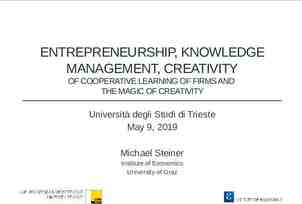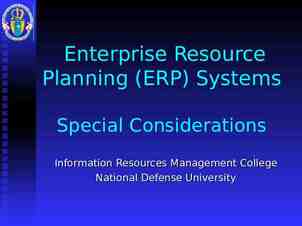5.5- Product Life Cycle
15 Slides7.37 MB
5.5- Product Life Cycle
Product Life Cycle What is it? A tool for mapping out the four stages of a product’s commercial life: Introduction; Growth; Maturity; Decline. All products have a life cycle. What does this mean?
Introduction Could be the most expensive part for a company launching a new product. The size of the market for the product is small Sales are low although they will increase (hopefully) High Costs especially if it’s a competitive sector research and development consumer testing marketing needed to launch the product can be very high Examples? Holographic projections
Growth Strong growth in sales and profit start to benefit from economies of scale in production the profit margins, as well as the overall amount of profit, will increase. Allows for more investment in the promotional activity of product. Increasing demand sees little need to modify pricing. Examples? Tablet computers
Maturity Product is established Aim for the manufacturer is to maintain the market share they built Competition appears and the pace of sales growth may slow Manufacturers try to differentiate their product Examples?
Decline Market for a product will start to shrink Market becomes saturated all the customers who will buy the product have already purchased it or because the consumers are switching to a different type of product. While this decline may be inevitable, it may still be possible for companies to make some profit switch to less-expensive production methods cheaper markets. Example) Desktop personal computers- 10% decline throughout 2013
Trends of Product Life Cycle Brief maturity then decline rapidly –Fashion and toys Other products have very long periods of maturity- Coca-Cola
Extending the Product Life Cycle What can businesses do to extend the product life cycle? Advertising – try to gain a new audience or remind the current audience Price reduction – more attractive to customers Adding value – add new features to the current product, e.g. improving the specifications on a smartphone Explore new markets – selling the product into new geographical areas or creating a version targeted at different segments New packaging – brightening up old packaging or subtle
Built in Obsolescence What do you think it is? Why would manufacturers do this? Planned obsolescence may include: Low durability Style obsolescence Not easily or cheaply repaired Difficult to disassemble restricting maintenance Improved models
Advantages Disadvantages
Circular Economy What is it? Industrial economy that is set up in a way to have zero sum impact on the environment Waste should be designed out at the earliest stages of planning. Designing for disassembly, re-purposing and recycling Use energy from renewable resources
Read: http://www.sfgate.com/bayarea/article/Livermore-s-mysterious-lig htbulb-burns-110-years-2460710. php http://www.economist.com/node/13354332 https://www.techforanyone.com/is-planned-obsolescence-real/




















